Business
10 Pricing Strategies For Subscription Based Businesses
Dodd Caldwell
July 21, 2020

If you’re running a subscription based business, you know that hitting the right price point is essential to make yourself profitable.
But it’s not just the right price, it’s how you communicate that price and package it to your consumer. You want your customer to feel good about the value they are getting, as well as feel that their needs are met.
How do you figure out what your pricing strategy should be?
There is no one strategy that can apply to all customer bases. However, if you factor in your business, product, and the market you’re trying to reach, you can come up with the best strategy and build a pricing model that will work for you.
Here are some strategies and considerations.
1. Ask
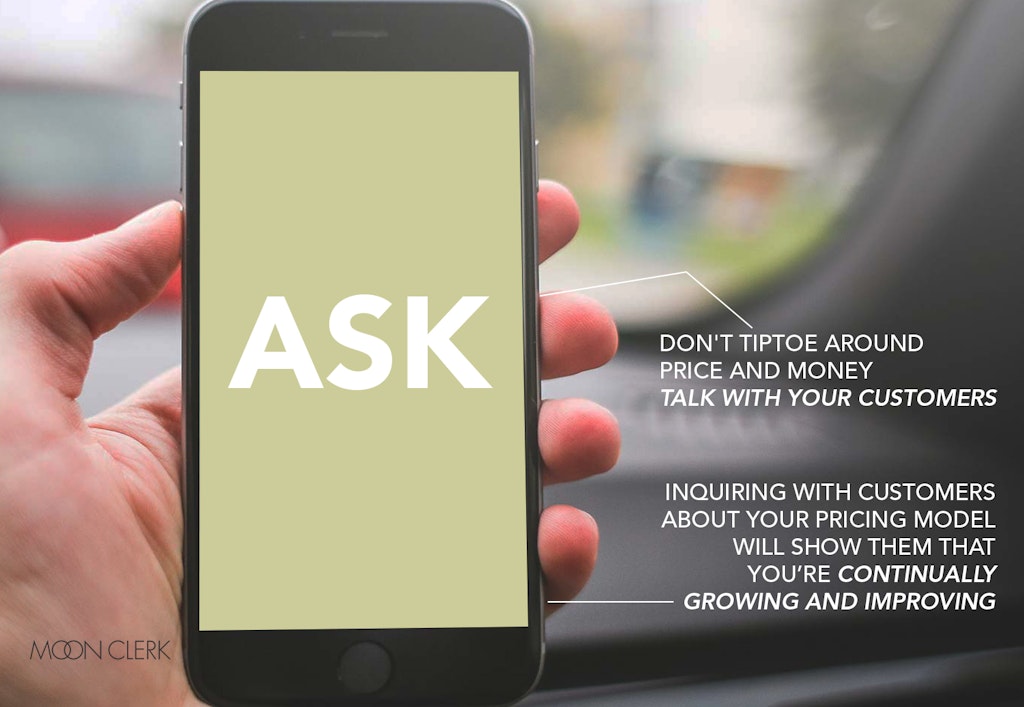
When trying to figure out what works best for your subscription business, don’t be afraid to ask. You may be tempted to tiptoe around price and money talk with your customers, but don’t. They expect to pay for a service or product; it’s not a secret.
Inquiring with customers about your price point and pricing model will show them that you’re continually working to grow and improve your business.
Obviously you need to choose wisely which customers to ask. Long time, loyal customers who are very pleased with your product will be happy to give you advice about price.
There are numerous websites out there that offer services to survey your customers. Customer survey software can help you:
- Map the journey of your customers
- Enhance customer relationships
- Create a powerful first impression
- Get a detailed report of your research
- Identify the root causes of your customers behavior and your sales
If you’re looking for survey software, consider:
2. Be Upfront
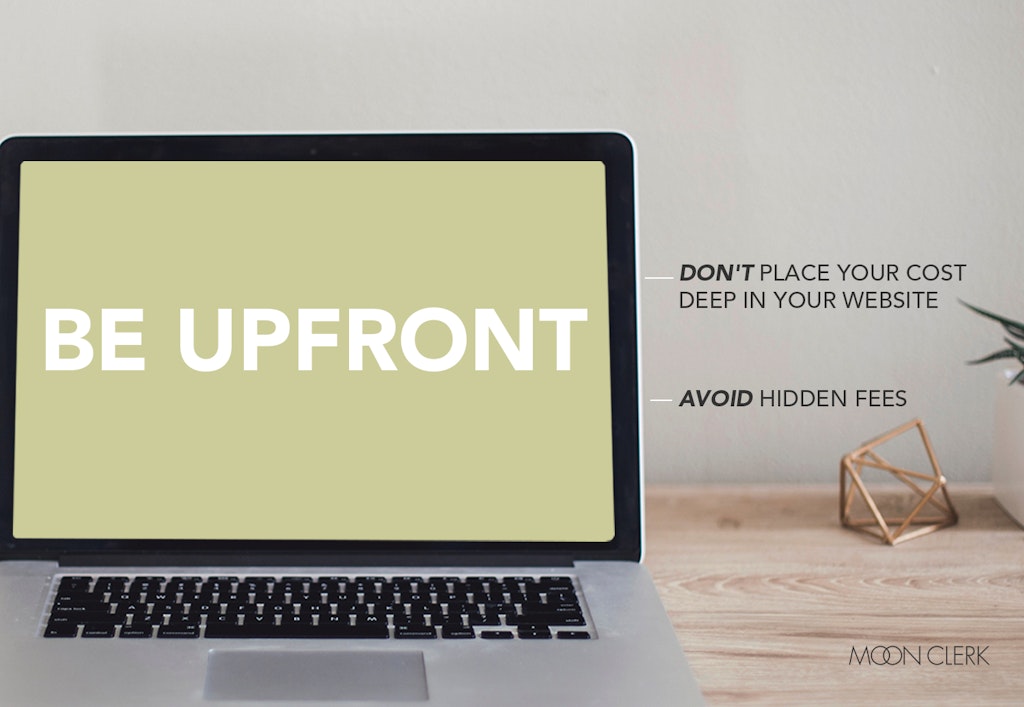
A good strategy when it comes to pricing is to be upfront with your customers. Avoid hidden fees or placing your cost deep in your website where it’s hard to find.
Putting it out there when it comes to your price is a strategy that can make potential customers feel as if your business is well established and successful.
3. Freemium or Basic Free

A basic free or freemium strategy is when you offer a baseline of your product for free, with the anticipation that your consumers will upgrade to a paid package.
One could argue that the freemium strategy is more about customer acquisition than pricing, but either way it should be considered.
A freemium model can be great to get people in the door, so to speak, but be cautioned– set a time limit to those on a free subscription. It can get expensive to support a high level of non-paying customers. Netflix is a good example of this. They start you at a free trial and then require you to upgrade after 30 days.
Another way to use the freemium strategy is to offer a limited set of features to free customers, with a significant upgrade for regular customers. These features allow the customer to experience the power of what you offer without all the features.
For reference, check out Shortstack, an example of a company that starts out free but grows with the customers needs.
4. Offer a Tiered Pricing Plan
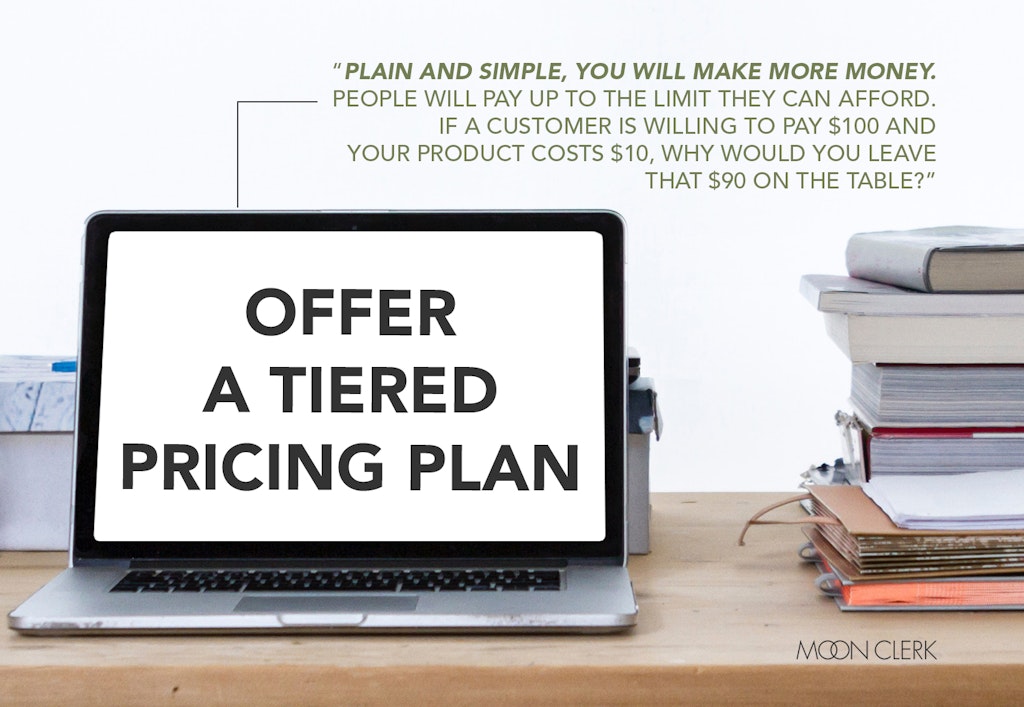
We are living in a new market where there is not just one price for a service. The value of your business can mean different things for different people and vary among customers.
Setting up your pricing to reflect this difference in customer need can optimize your earning potential. How do you know if your business would benefit from pricing tiers? It’s very likely it would.
Think about it. Pricing tiers are nothing new. On a simple level, there are small, medium, and large drinks at a fast food restaurant. On a more complicated level, something like a photo or video storage website would offer tiers based on level of usage or amount of storage needed.
How many tiers do you need? This too should be based on your service and your market. Examine what your consumers are buying and/or using and watch for patterns and spikes in what people are purchasing.
Look around at other tier pricing plans and you’ll see that most are 3-5 tiers. (Ex: Basic, Plus, Premium) And listing them from high to low on your website seems to have the most positive effect.
Here is a quote from a Summit Evergreen article: “Plain and simple, you will make more money. People will pay up to the limit they can afford. If a customer is willing to pay $100 and your product costs $10, why would you leave that $90 on the table?”
5. Promotions and Upgrade Incentives

You may have subscribers paying for a tier of service who may only need a small push of encouragement to jump up to the next level of service. This will increase their long term value to you, so it’s worth offering them an incentive.
It could be $50 of credit, a month of free service on the new plan, or just some swag. Anything that could entice your consumer to level up to the next tier.
This is a very common tactic among subscription businesses, and for good reason- it works!
For example, Kiwi Co sells crates to children of all ages, sending them each month a box full of hands on learning tools and projects, encouraging them to “tinker, create, innovate.” They offer an increased discount each time you increase the amount of months paid for in advance.
6. Pay-As-You-Go (Consumption Pricing)
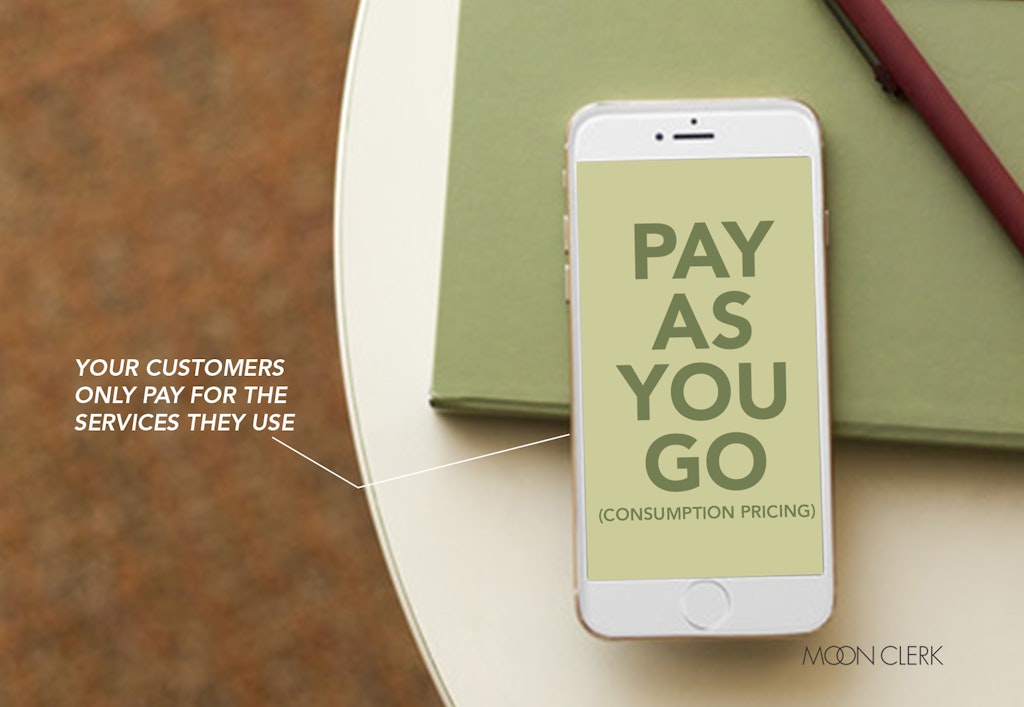
Some business models could benefit from a pay-as-you-go system, where your customers only pay for the services they use. This would compare to how you pay for your utilities. You are charged for the amount of water or electricity you use and there are no additional costs or fees if you stop using them.
Here at Moonclerk you pay based on volume (with a minimum monthly charge) and are charged automatically at the end of every month, with no hidden fees, no contracts, and no hassles.
Another example is Amazon Web Services, which uses the pay as you go pricing model for their cloud services.
7. Overage Strategy
Many subscription businesses are adopting this strategy of locking in your customers at a base price, and then charging them for any overages they accrue. Charging them for extra usage is similar to the pay-as-you-go model above.
If users see that they often have overage charges, this may encourage them to bump up to the next level in the payment tier.
A good example of this strategy is eFax, whose site offers an extra charge after you exceed a certain number of pages.
8. Annual Payment
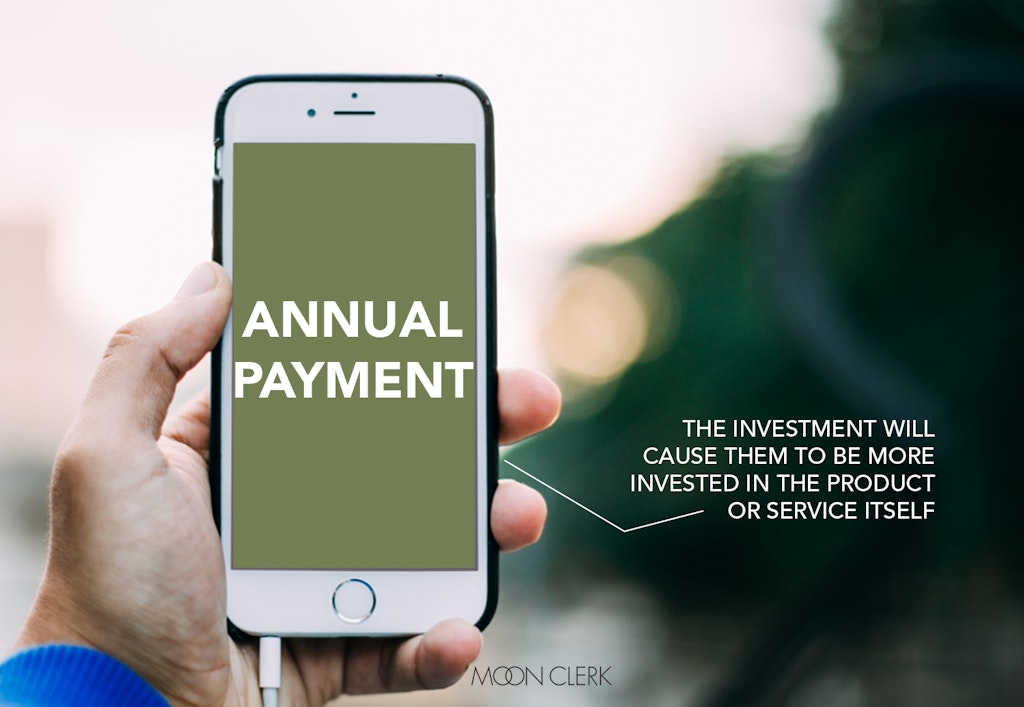
You should always offer the option for your subscribers to pay annually. As the saying goes, time is money, and the time that can be saved by renewing annually is valuable to your customers.
When they pay annually, your customer has made a large investment that will cause them to be more invested in the product or service itself.
It’s smart to offer a discount for paying for an entire year up-front – either a percentage off or 1-2 months free, depending on what works best for your business.
9. Make Payments Easy
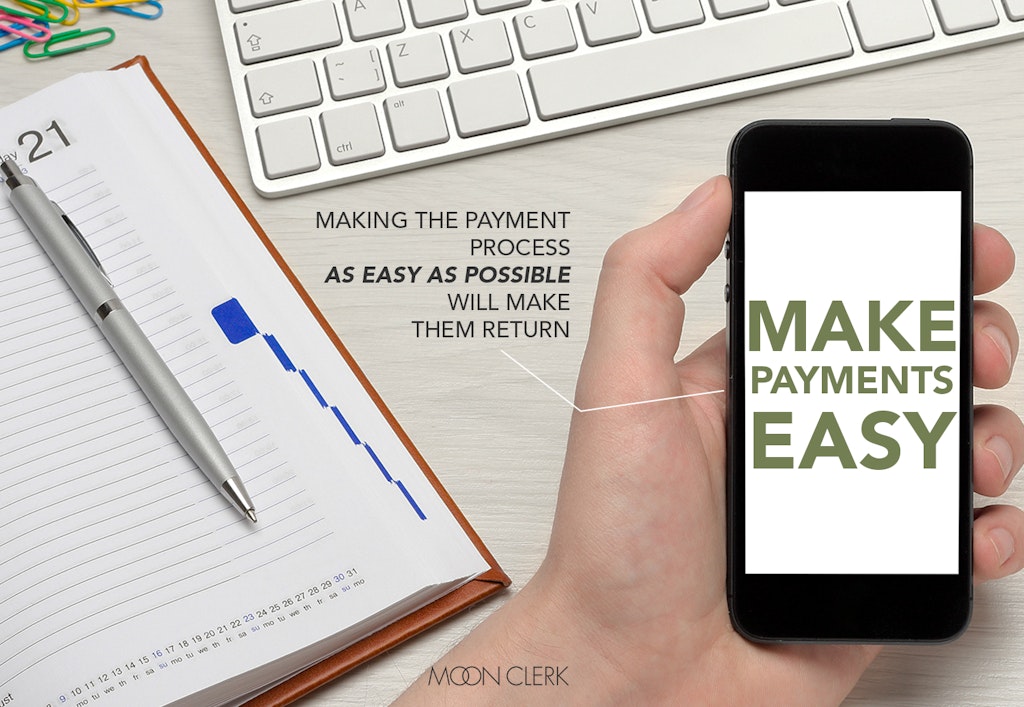
Whatever kind of pricing strategy you decide on, it will fall flat if making payments is tedious or difficult in any way for your clients.
When they are ready to pay, making the process as easy and painless as possible will help new and returning customers feel low stress about signing up or renewing.
Moonclerk offers subscription billing with one click that is seamless and can help you increase conversion rates, manage logistics and customers, all while looking beautiful.
10. Reevaluate
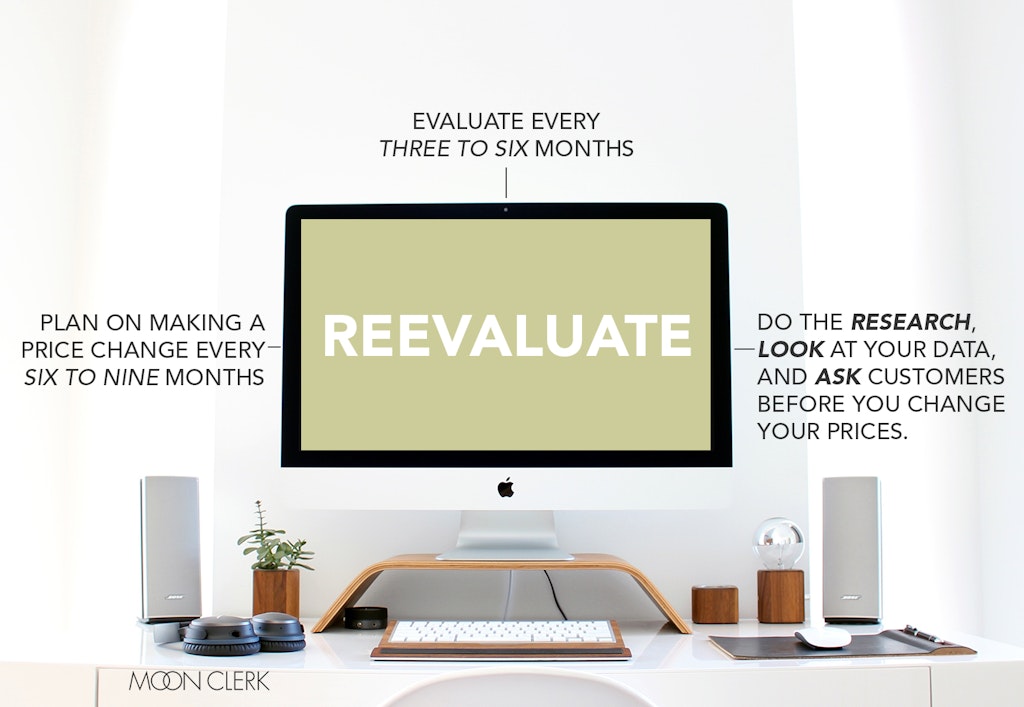
Pricing is a dynamic tool that can drive business, so it’s important that it’s strategic and flexible. It is important to reevaluate your use of this tool and how it is affecting your business overall.
It’s a good rule of thumb to evaluate every three to six months, and plan on making a price change every six to nine months. Do the research, look at your data, and ask customers before you change your prices.
You can get this information not just from current subscribers, but also from prospects and target customers. What is the value of your service to them? Take all of this into account when reevaluating your pricing strategy.
Conclusion
Meet your earning potential and maximize capital by:
- Asking customers and being upfront with your cost
- Using a tieedr pricing system that is customized to your type of service or product
- Making payments easy
- Offering promotions for upgrades and discounts for annual up-front payments
- Offering pay as-you-go or overage pricing, depending on your type of business
- Reevaluating and restructuring your pricing often
All these pricing strategies are not expected to function alone to be successful, nor do they need to remain the same. There is maximum potential to mix and match these strategies, as well as change them to meet your company’s needs.
The most important thing to remember is that pricing strategies are key and worth time and discussion among your team to assure that your pricing strategy is working for you and not holding you back!


